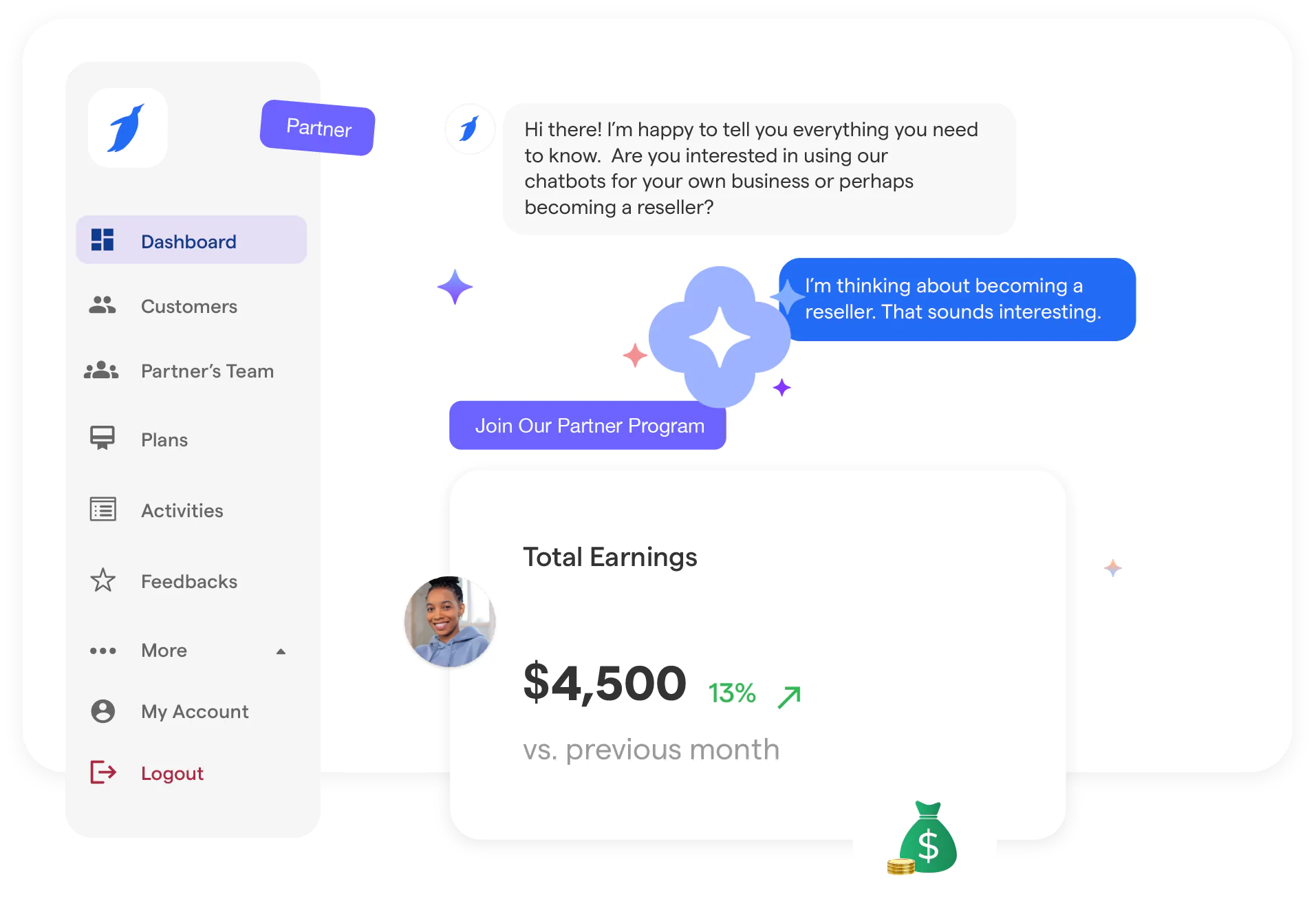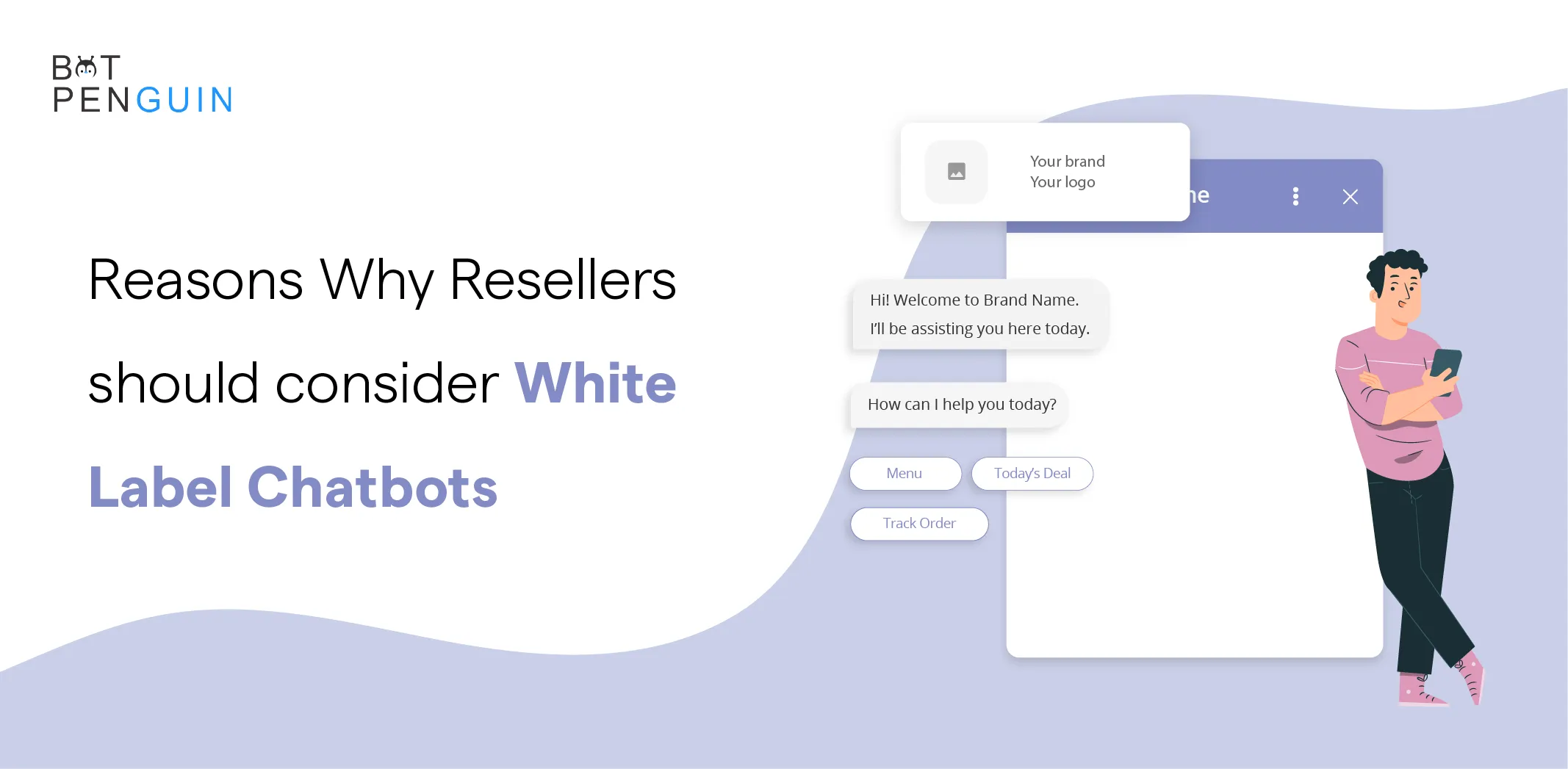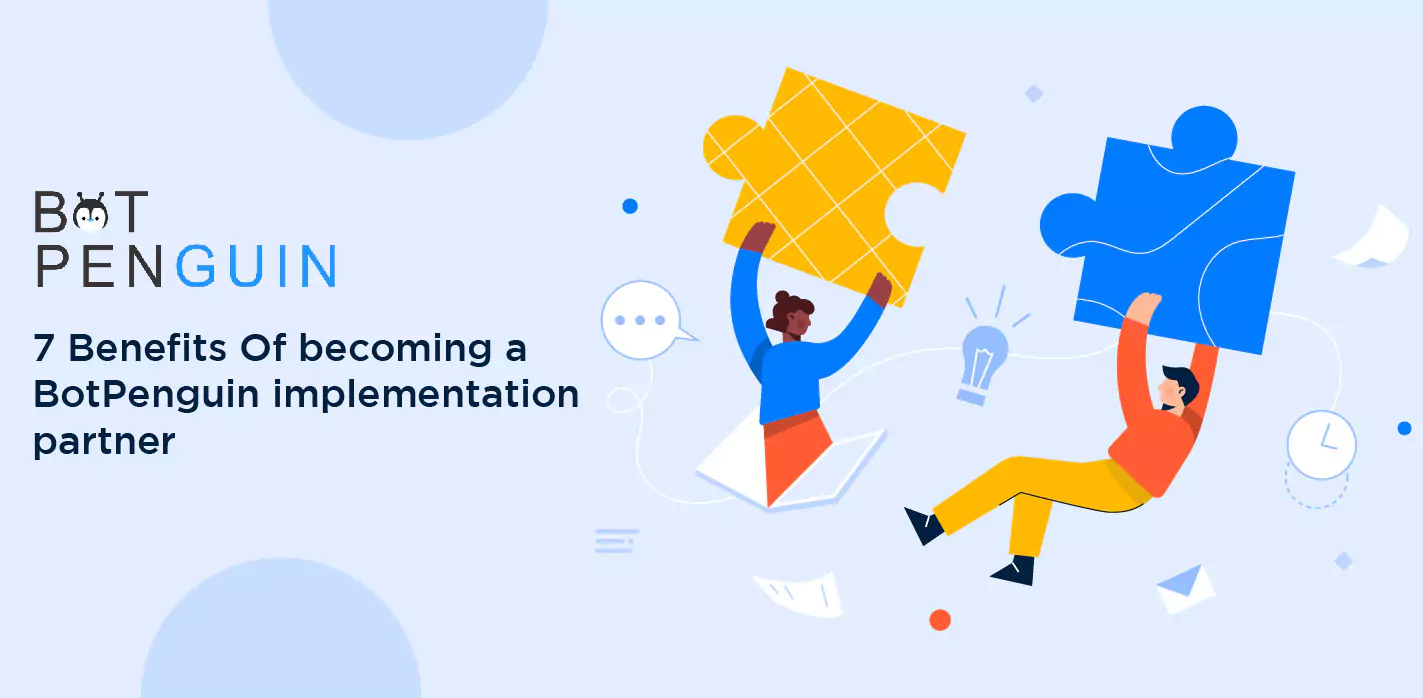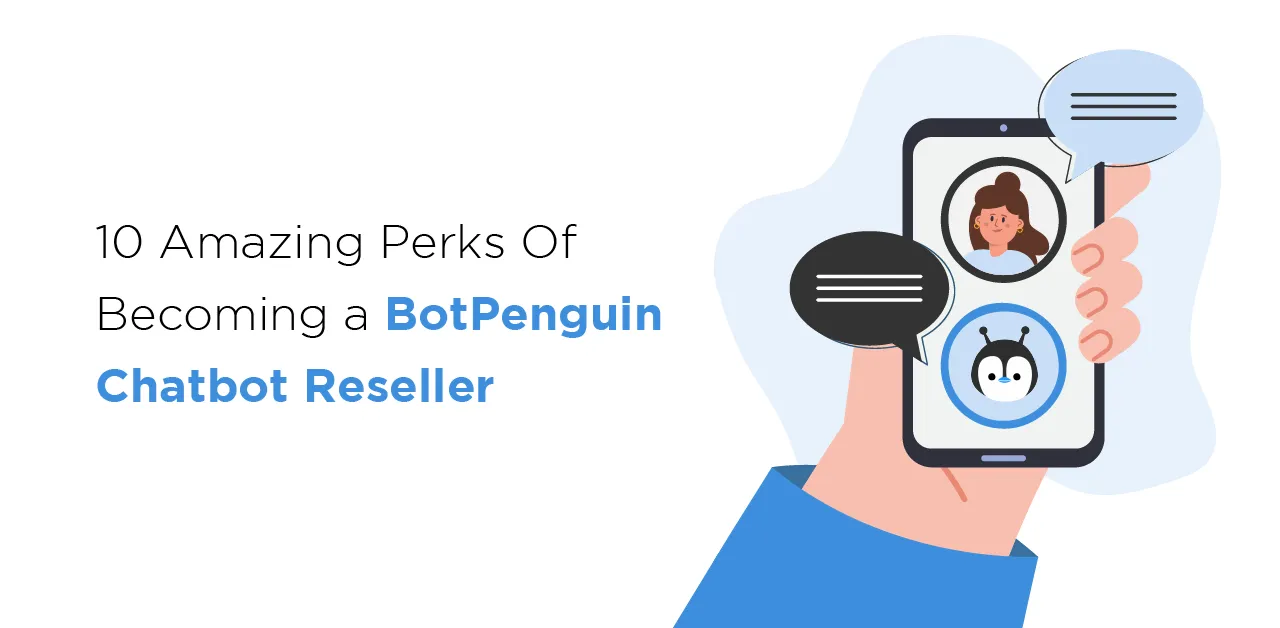Most local businesses don’t need a website.
Sounds crazy? It’s not. Many businesses already get most of their leads from social media, messaging apps, and word of mouth. Yet, they struggle with slow response times, missed leads, and poor customer engagement.
That’s why chatbots are the real game-changer. They don’t just sit on a website. They work 24/7, answering questions, booking appointments, and converting leads instantly.
But how do you sell chatbots to local businesses? It’s easier than you think. This guide will show you exactly how to find leads, pitch chatbots, handle objections, and close deals—step by step.
Why Chatbots are Easy to Sell in the Current Time
Businesses are no longer just competing on products or prices. They are competing on speed and convenience.
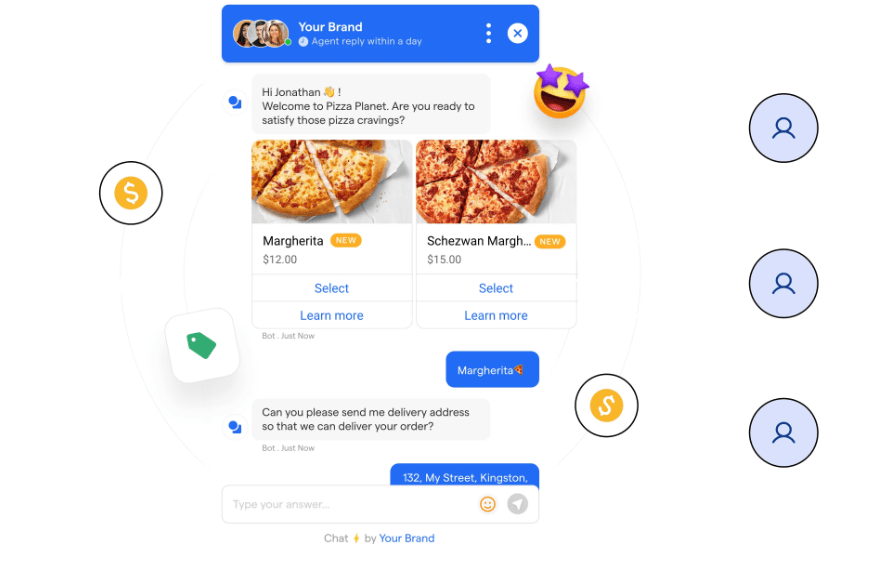
Customers expect instant responses; if they don’t receive them, they move on. That’s why chatbots are in high demand right now. They solve the most significant challenge local businesses face: delayed communication.
Even small businesses now understand that automation is the future. Chatbots are no longer a luxury. They are a necessity for companies that want to stay ahead.
And below are some reasons that have made it easy to sell chatbots in the current time:
AI Awareness Has Made Selling Easier
Just a few years ago, AI-powered chatbots were considered complex and futuristic. Today, thanks to ChatGPT, AI is everywhere. People use it for content creation, coding, and even answering daily questions. This has rapidly increased awareness about AI-driven automation.
Business owners are now more open to AI solutions than ever before. They’ve seen how AI can handle customer queries, generate responses, and automate repetitive tasks.
This shift in perception makes selling chatbots to local businesses much easier. You no longer need to explain what a chatbot is—most business owners already know.
Now, it’s just about showing how it benefits their business.
Customers Expect Instant Replies
Imagine a customer messaging a restaurant at 9 PM to ask if they have a table available. No response? They book somewhere else.
Now, picture a chatbot responding instantly:
"Yes, we have a table available! Would you like to reserve it?"
That’s a sale saved. Businesses lose customers daily because they can’t respond fast enough. Chatbots fix this problem instantly.
And with features like Auto DM on Instagram and Chat Management on WhatsApp, businesses can respond to leads automatically on the platforms they already use. No extra effort required.
Businesses Struggle with Staffing Issues
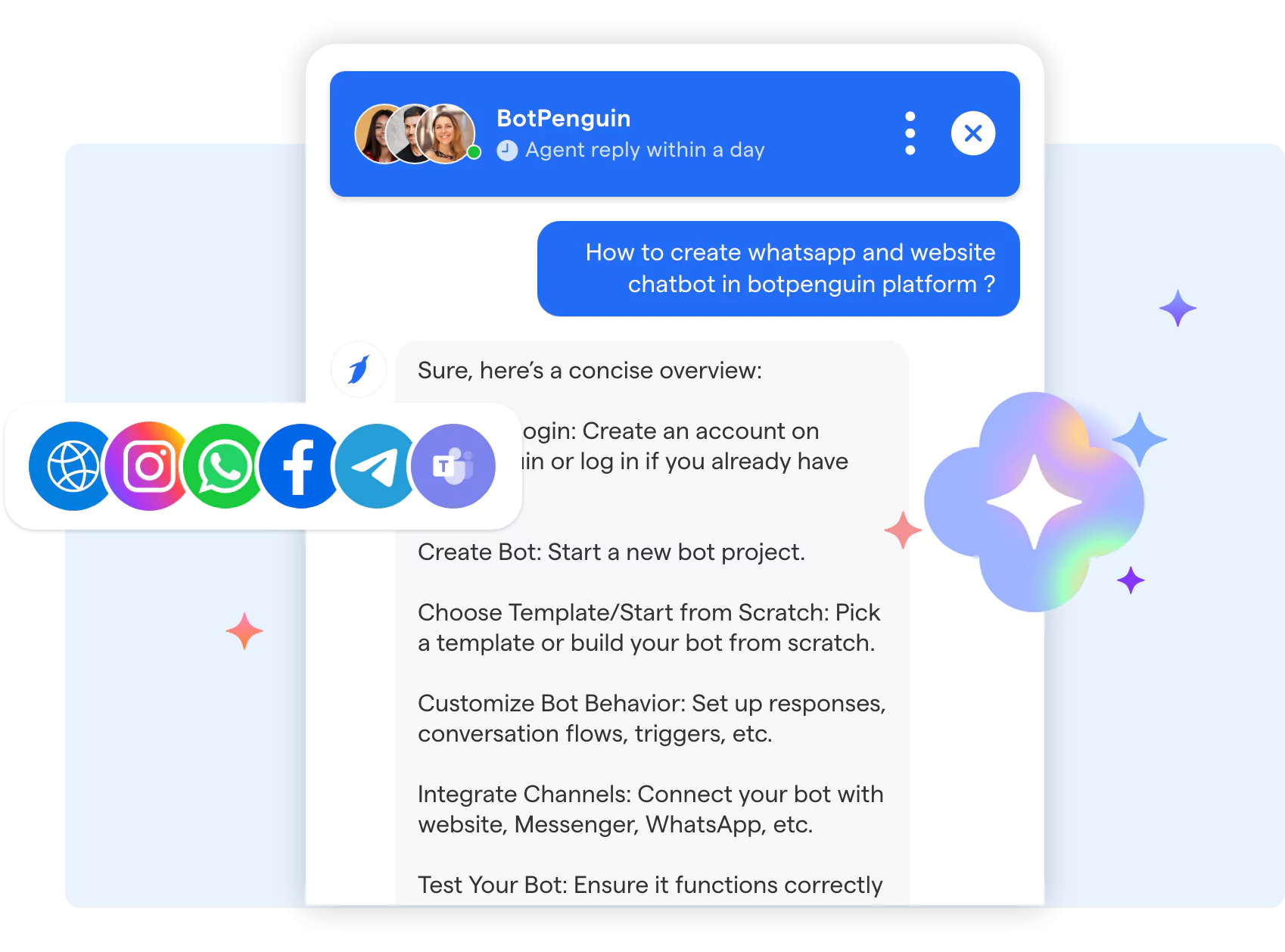
Hiring staff is expensive. Training them takes time. Even then, they can’t be available 24/7.
A chatbot never takes a break. It handles FAQs, booking appointments, and capturing leads without any extra costs. This means businesses can reduce hiring costs while improving customer service.
For a local business, a chatbot is like hiring a full-time assistant—but for a fraction of the cost. When you position it this way, business owners will see the value immediately.
Social Media and Messaging Apps Dominate
Most customer interactions happen on WhatsApp, Facebook Messenger, or Instagram DMs. If a business isn’t responding fast, they are losing leads.
Chatbots integrate seamlessly with these platforms, ensuring every inquiry is answered. A business owner doesn’t need to change how they operate—the chatbot just makes their current system faster and more efficient.
Selling Chatbots to Local Businesses Using Reselling Solutions
If you’re looking to start selling chatbots to local businesses, but don’t want to build them from scratch, BotPenguin makes it easy.
It’s a leading no-code AI chatbot maker platform that offers an omnichannel solution with chatbots for websites, Facebook, Instagram, WhatsApp, Telegram, and Shopify.
With more businesses realizing the value of automation, chatbot demand is skyrocketing. But instead of just selling one-off solutions, you can build a chatbot business of your own. BotPenguin offers two reselling options that let you do exactly that.
1. Whitelabel Chatbot Program – Sell Under Your Own Brand
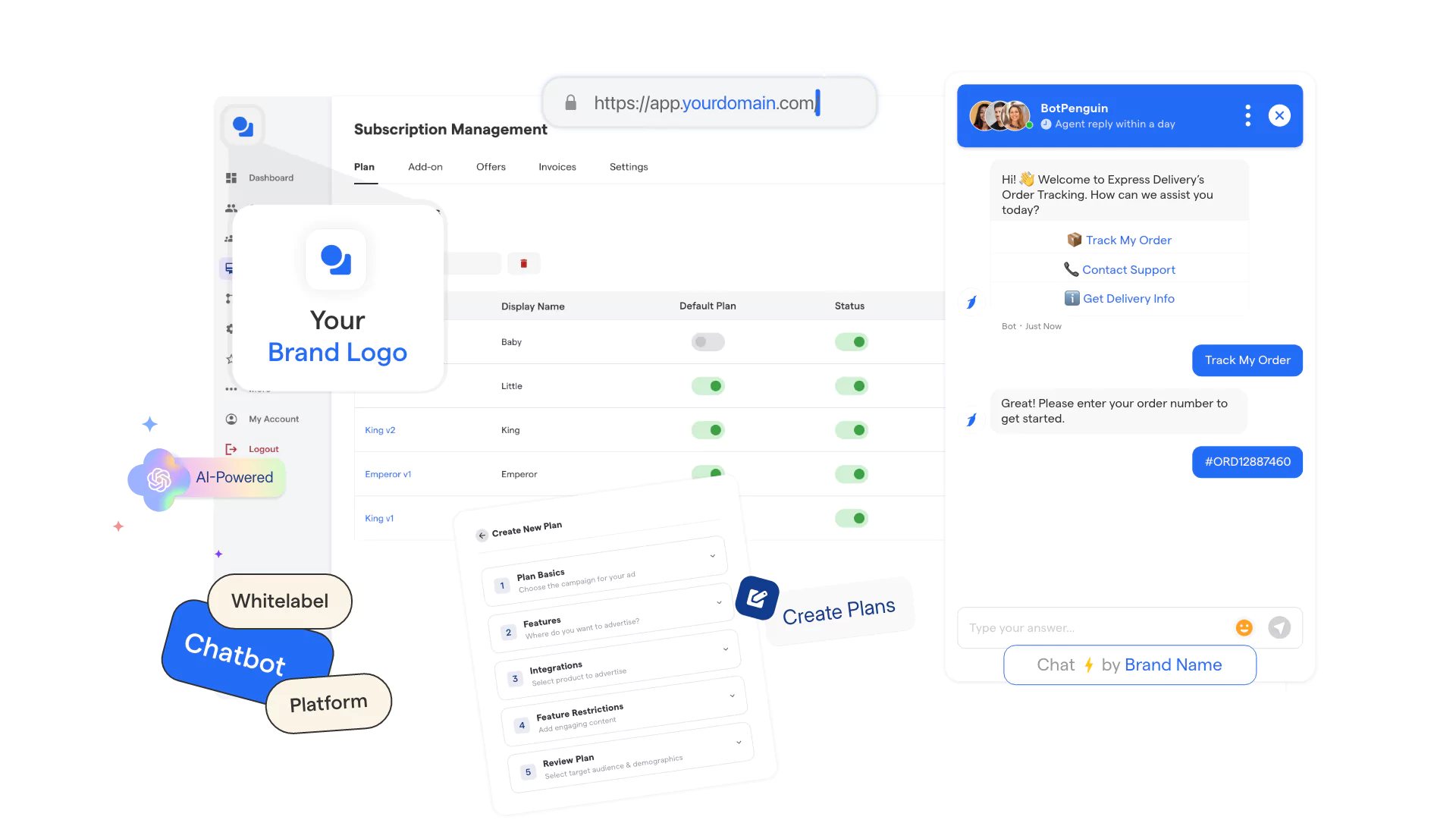
Want to sell chatbots as your own product? The Whitelabel AI Chatbot Program lets you use your brand name, logo, and pricing. You decide how much to charge, whether to offer add-ons, and even sell in multiple currencies.
Think of it like starting your own chatbot company—without the hassle of development. You get a full dashboard to manage your customer base, handle subscriptions, and track payments.
For example, if you're a digital marketing agency, you can package chatbots as an added service. You’re not just reselling; you’re building a brand in the AI space.
2. AI Chatbot Reseller Program – Earn Commissions on Sales
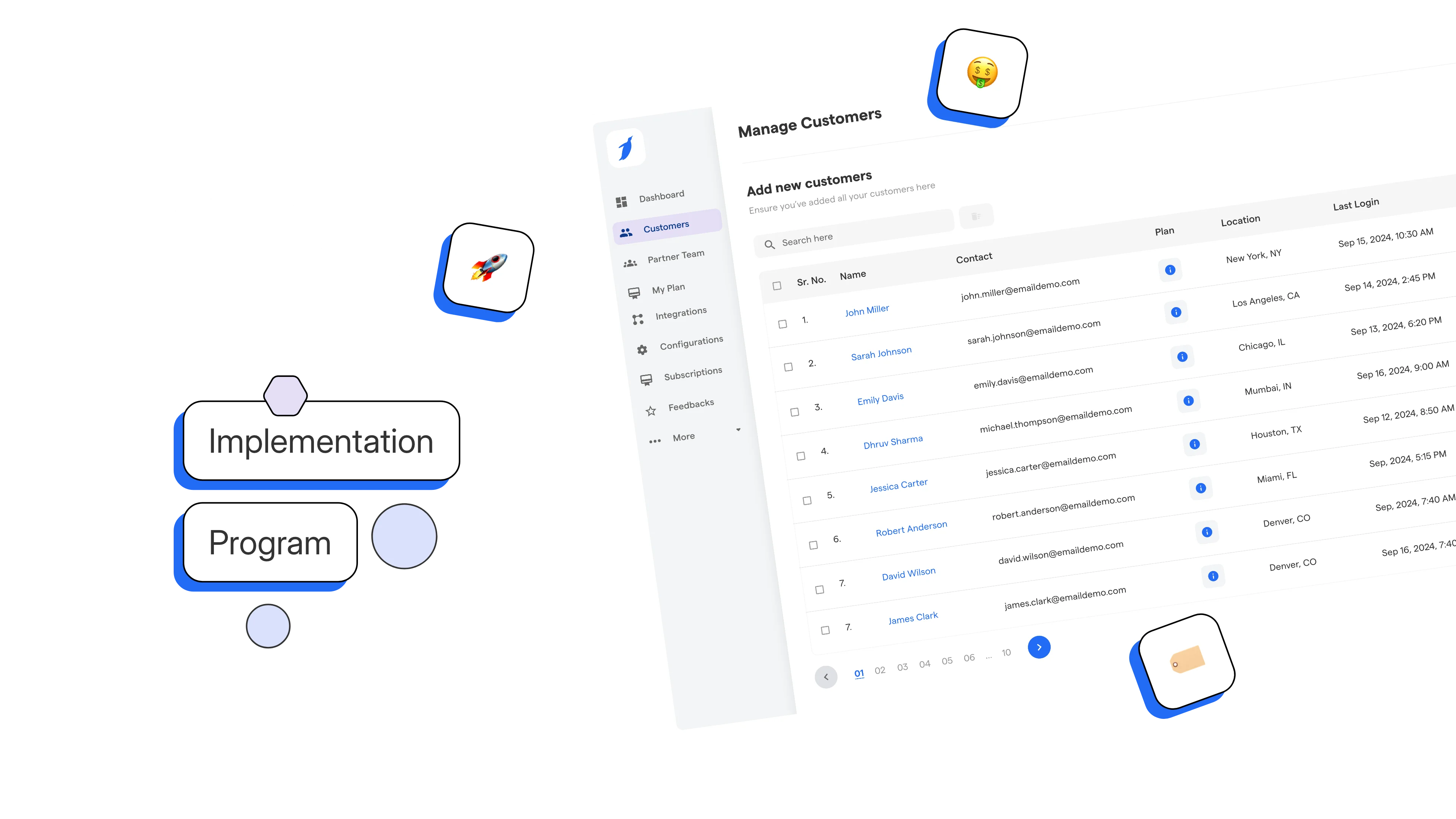
If you don’t want to manage branding but still want to profit from chatbot sales, this is the best option. You sell BotPenguin chatbots under the existing brand and earn commissions on each sale.
Commissions start at 20% per sale and can go up to 40%. You also get a dashboard to manage your customers, track sales, and monitor commissions.
This is perfect for freelancers, IT service providers, and small businesses who want to add chatbots as part of their offerings without handling customer support or branding.
How Much You Can Earn by Selling Chatbots to Local Businesses
Selling digital products has a huge advantage: low cost, high profit, and recurring revenue. Unlike physical products, chatbots don’t require inventory, shipping, or restocking. Once a business subscribes, you keep earning every month.
With more businesses embracing AI and automation, selling chatbots to local businesses has never been easier—or more profitable.
But how much can you really earn?
Well, it depends on whether you go fully branded (White Label) or sell as a Reseller with BotPenguin.
Let’s break it down.
1. White Label Program – Build a Subscription-Based Income
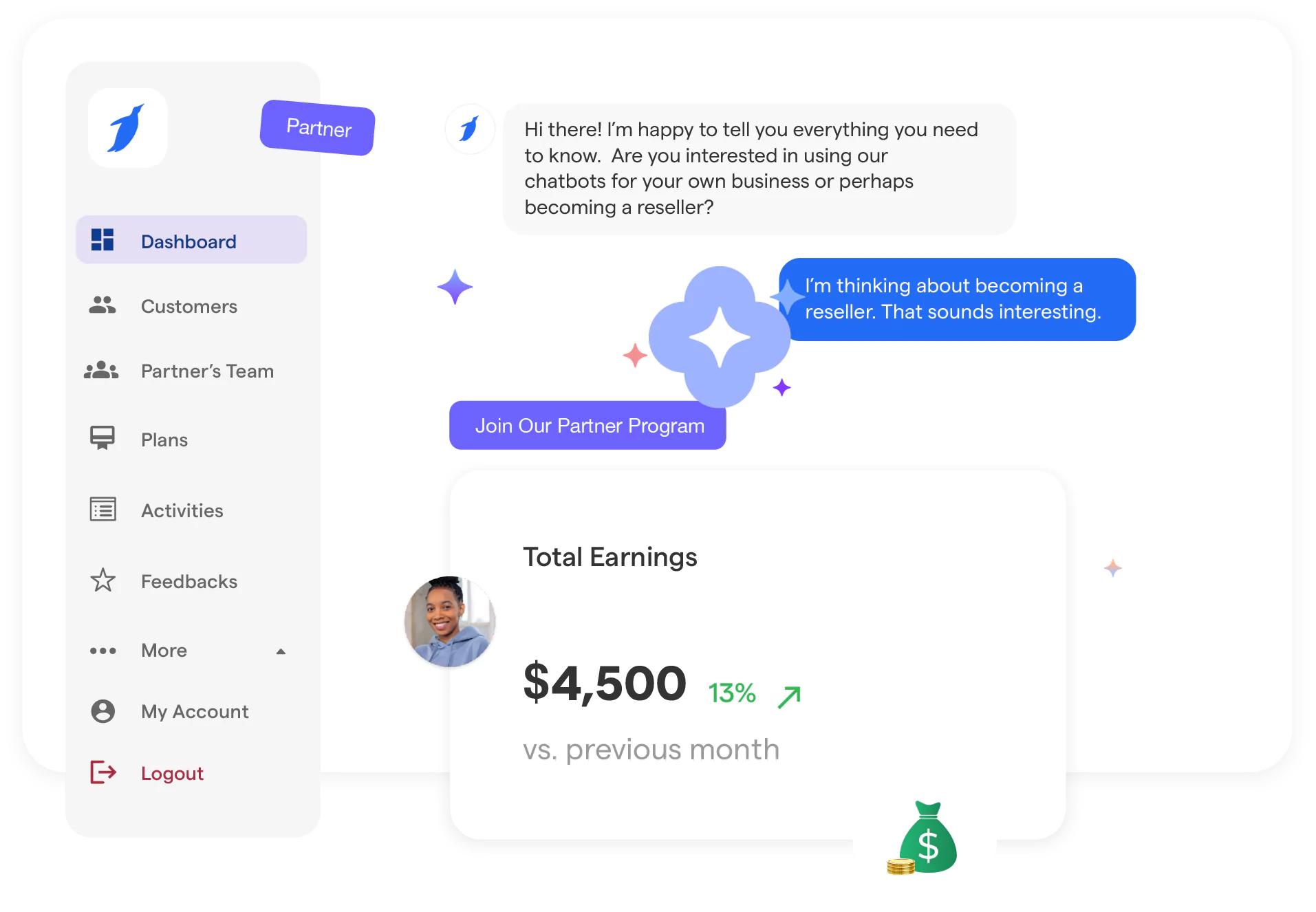
With the White Label Program, you sell chatbots under your own brand, set your pricing, and keep 100% of the profit.
Let’s assume you charge:
✅ $100 per month for chatbot subscription ($1000 for yearly plan)
✅ $50 additional per month for chatbot maintenance & updates ($500 per year)
If you onboard 10 businesses opting for a yearly plan in one month, your earnings look like this:
✅ $1500 × 10 = $15,000 per month
And if you keep up with the same pace of acquiring customers each month, your early revenue will look something like this:
✅$15,000 × 12 = $180,000
Now, if you scale this to 100 businesses over time:
✅ $1500 × 100 = $150,000 per month
This is pure recurring income, meaning even if you stop selling for a while, you’ll still be making money every month. Many agencies and freelancers use white-label chatbots to build a steady, scalable business.
2. Reseller Program – Earn Recurring Commission + Service Fees
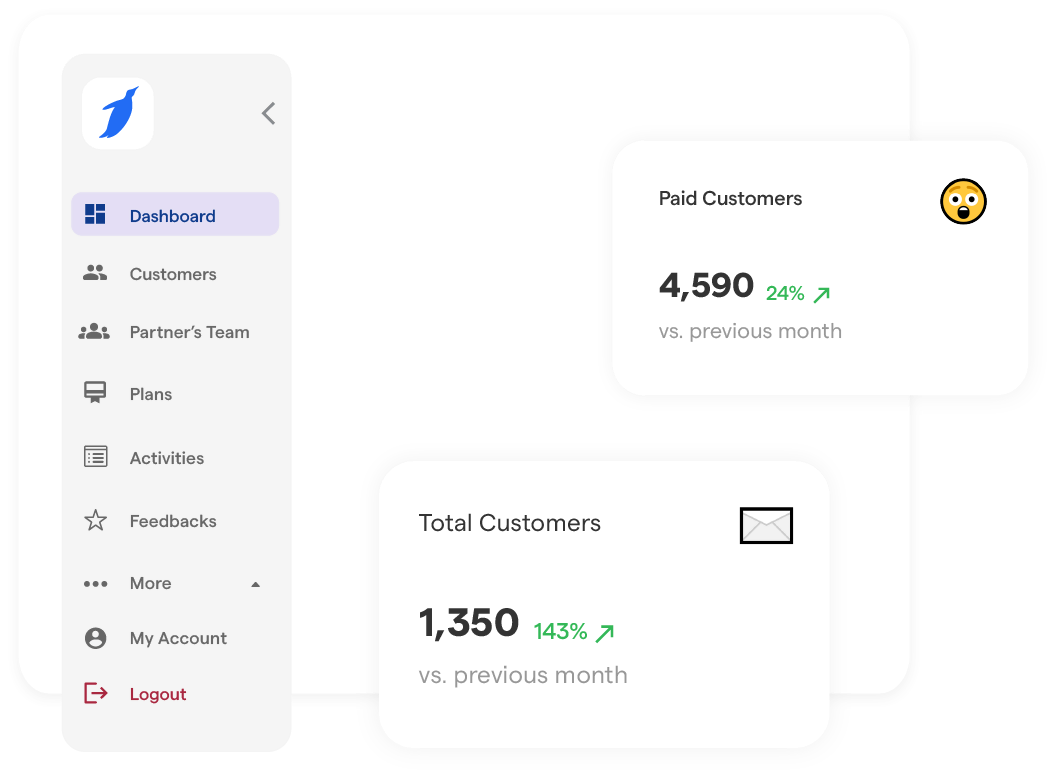
If you prefer commission-based sales, the Reseller Program lets you sell BotPenguin chatbots under their brand while earning up to 40% commission.
Here’s how the earnings break down:
- Suppose the average annual chatbot plan costs $450.
- You sell 20 subscriptions per month.
At 20% commission, your monthly earnings:
✅ $450 × 20 × 20% = $1,800 per month
At 40% commission, your earnings double:
✅ $3,600 per month
Your annual income at 40% commission:
✅ $3,600 × 12 = $43,200 per year
Boosting Your Reseller Earnings with Service Fees
You can increase your income further by offering additional chatbot services:
- Chatbot Setup Fee: Charge $100–$300 per chatbot for setup.
- Customization Services: Offer chatbot flow building for businesses needing industry-specific automation.
- Chatbot Management Subscription: Charge $50–$100/month for chatbot monitoring and updates.
For example, if you charge $200 per chatbot setup and onboard 10 clients per month, that’s an extra $2,000 per month—on top of commissions.
Things to Do Before Selling Chatbots to Local Businesses
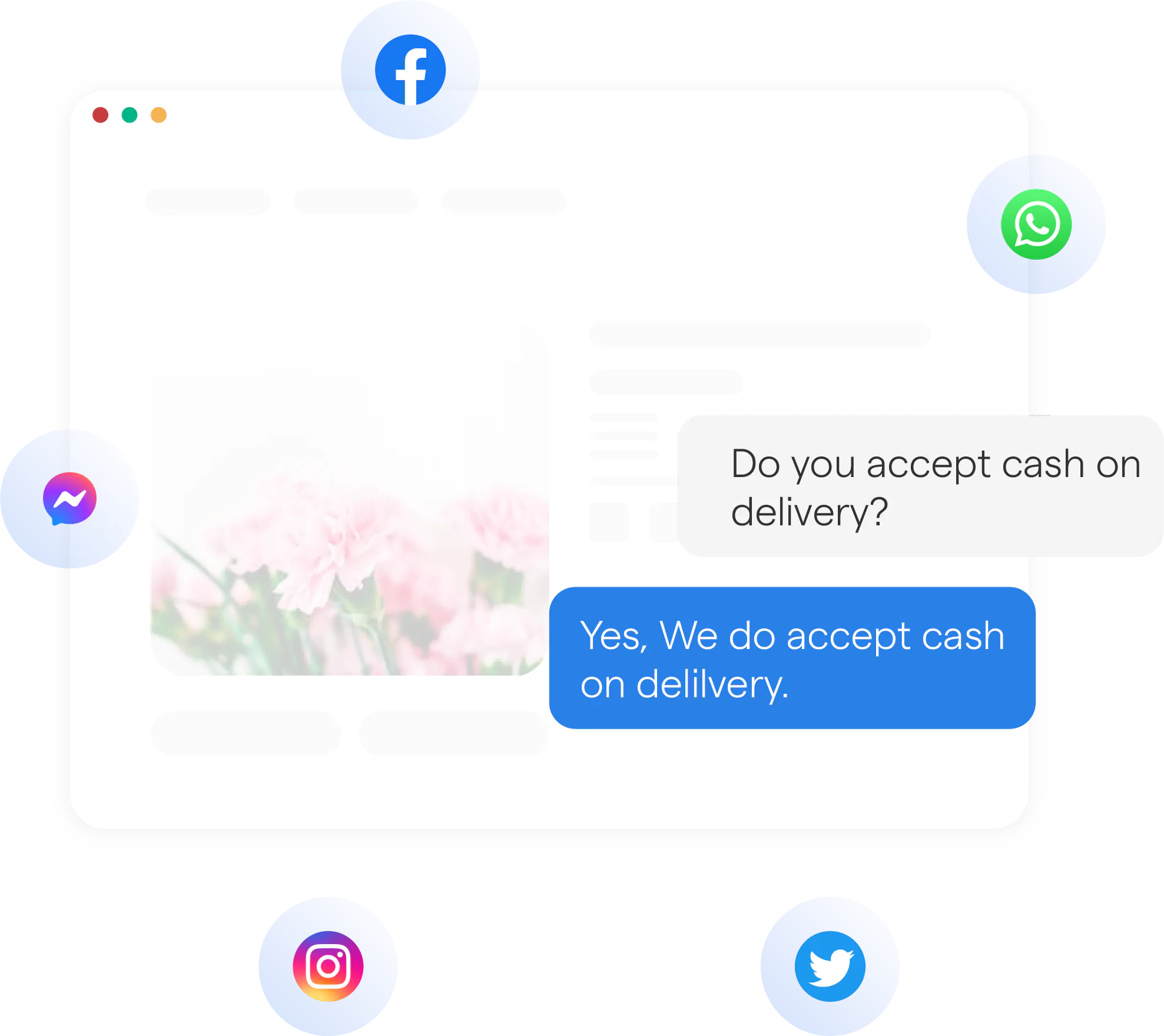
Jumping into selling chatbots to local businesses without preparation is a mistake. Businesses won’t buy just because chatbots exist. They need a real reason to invest.
Before making a pitch, you need to know which businesses benefit most, their pain points, and chatbot use cases. You also need to understand the chatbot’s capabilities so you can confidently explain how it solves their problems.
Let’s go step by step.
Understand the Types of Local Businesses That Benefit from Chatbots
Not every business needs a chatbot, but many do. The best targets are businesses that rely heavily on customer interactions, bookings, or lead generation.
✅ Restaurants & Cafés – Handling table reservations, food orders, and customer queries.
✅ Salons & Spas – Managing appointment bookings, cancellations, and reminders.
✅ Healthcare Clinics – Scheduling patient visits and answering FAQs.
✅ Real Estate Agencies – Automating property inquiries and lead collection.
✅ E-commerce & Retail Stores – Managing orders, tracking deliveries, and offering shopping assistance.
✅ Fitness Studios & Gyms – Handling memberships, workout schedules, and promotions.
If a business regularly deals with customers online, they can benefit from a chatbot.
Learn the Pain Points That Local Businesses Face
Local businesses struggle with high customer demand but limited resources. Their biggest challenges include:
❌ Slow Response Times – Customers hate waiting. Delays mean lost sales.
❌ Missed Leads – Most businesses don’t track inquiries, leading to lost revenue.
❌ Limited Staff – Hiring a full-time assistant is costly.
❌ No After-Hours Support – Most businesses can’t reply outside working hours.
❌ High Call Volume – Constant phone calls disrupt daily operations.
A chatbot can fix all these issues, making it an easy sell if positioned correctly.
Identifying Chatbot Use Cases for Each Industry
Every industry has different needs. Your job is to match chatbot features with real problems.
🏢 A Salon Owner’s Problem: Too many missed appointments.
💡 Chatbot Solution: Automatically confirms, reschedules, and reminds customers.
🏢 A Restaurant’s Problem: High call volume for reservations.
💡 Chatbot Solution: Handles bookings through Instagram, WhatsApp, and websites.
🏢 A Clinic’s Problem: Patients keep calling for appointment slots.
💡 Chatbot Solution: Integrates with Google Calendar to schedule visits.
Showing businesses how a chatbot saves time and money makes closing deals easier.
Knowing the Capabilities of the Chatbot You Will Be Selling
Before selling, you need to understand the chatbot’s strengths and limitations.
If you opt for BotPenguin, you’re in a strong position because it covers all major pain points with these powerful features:
✅ Customer Support Use Cases:
- AI-powered responses using ChatGPT models.
- Detects and replies in the customer’s language while showing English translations in the inbox.
- Trainable on websites, PDFs, Google Sheets, Notion, and more.
- Customizable AI persona for friendly or formal tones.
- Real-time AI chat suggestions for quick issue resolution.
- If/Else conditions to pass complex queries to human agents or trigger different chat flows.
- Learns from past chats, becoming smarter over time.
- No-code chatbot builder with visual flow and ready-made templates.
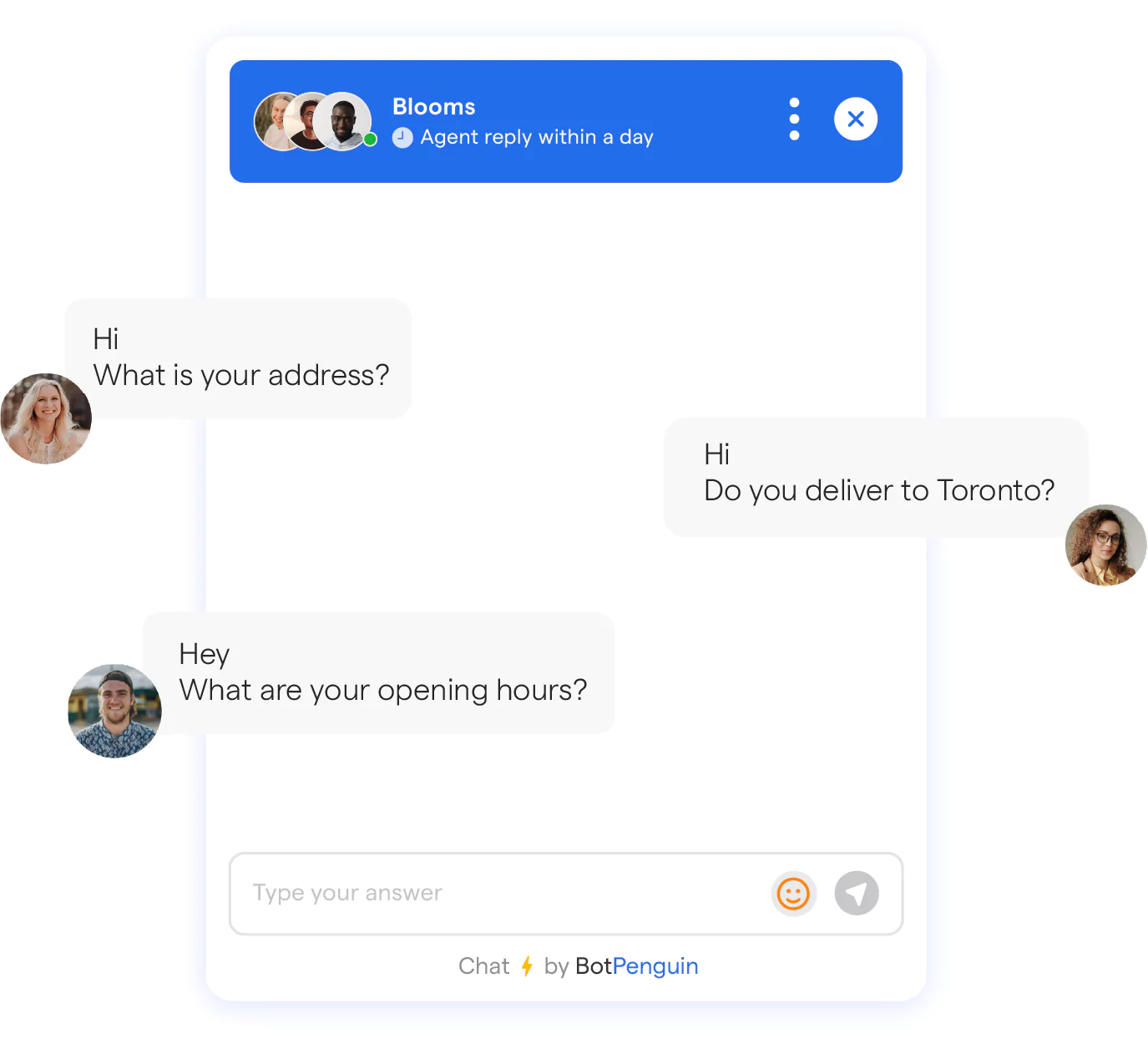
✅ Lead Generation Capabilities:
- Collects names, emails, and phone numbers from chats.
- Auto-syncs with CRM tools like HubSpot, Zoho, and Google Sheets.
- Automates appointment bookings with Google Calendar and SimplyBook.
- Works 24/7, ensuring no lead is lost.
✅ Marketing & WhatsApp Chatbot Features:
- Bulk messaging with pre-approved templates.
- Carousel messages to showcase multiple products.
- Trigger keyword-based responses (e.g., “offer” triggers an exclusive deal).
- Syncs with Facebook product catalogs for easy in-chat shopping.
- Recover abandoned carts by nudging customers via WhatsApp.
- Shopify integration for seamless order tracking.
With BotPenguin, businesses save time, reduce costs, and increase sales effortlessly.
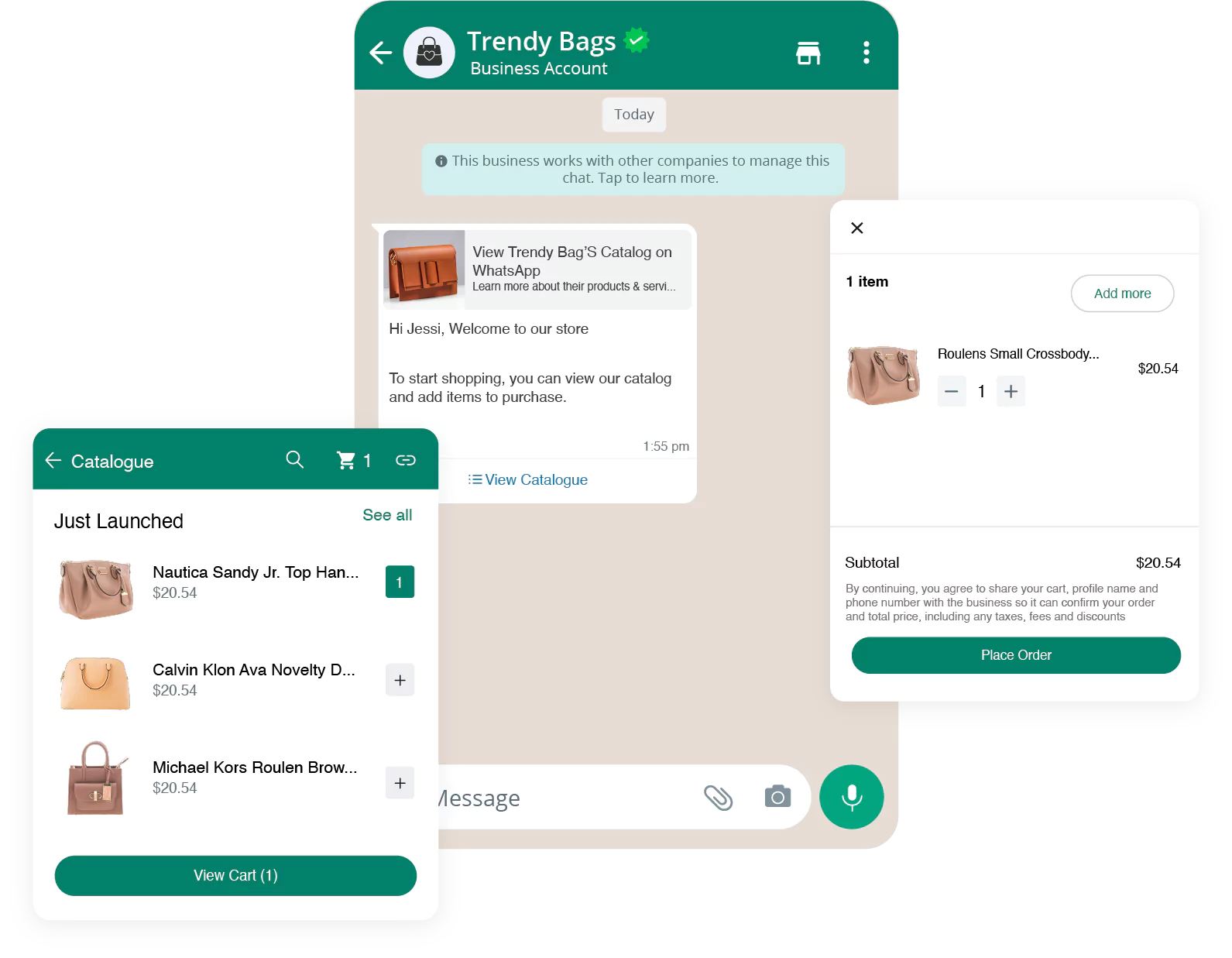
Creating an Irresistible Offer
A chatbot is great, but businesses won’t buy unless your offer is clear and valuable. Here’s how to structure it.
Deciding the Chatbot Package (Pricing, Features, Setup, Support)
Your package should be easy to understand. Common pricing models include:
- One-time setup fee + monthly subscription (for premium chatbot support).
- Tiered plans based on features (basic, pro, enterprise).
- Add-ons for extra services like chatbot customization, integrations, and analytics.
- The goal? Make it flexible but profitable.
Free Trial vs. Demo: What Works Best?
Many businesses hesitate to invest upfront. A free trial lets them test the chatbot risk-free, while a live demo shows real-time benefits.
A good approach:
- Offer a 7-day free trial to high-intent leads.
- Provide a live chatbot demo for those who want to see it in action.
- Use case studies to prove success stories.
- Seeing the chatbot in action makes it easier to close deals.
Test with Various Subscription Plans to Maximize Profit
Your pricing strategy can be customized based on:
- Number of messages sent per month (e.g., 500, 5,000, unlimited).
- Leads captured (charge based on leads stored).
- Custom chatbot flow creation (higher plans include more customization).
- Integration options (basic plans may exclude CRM or WhatsApp).
- Charging a setup fee or offering free setup on higher plans.
A structured pricing plan increases conversion rates and makes it easier for businesses to choose the right option.
How to Market and Sell Chatbots to Local Businesses
Building a chatbot is easy. Selling it to local businesses requires a strategy. Business owners are busy. They don’t have time to explore automation unless they see its value instantly.
To make chatbot sales easier, you need a complete marketing strategy. This helps you attract, educate, and convert local businesses before you even make a sales pitch.
Here’s how to market and sell chatbots to local businesses with real-world strategies.
1. Top of the Funnel Strategies
The first step is to get in front of local businesses and make them aware of chatbot benefits. They won’t come to you—you have to position yourself where they already look for solutions.
SEO – Be Visible Where Businesses Search
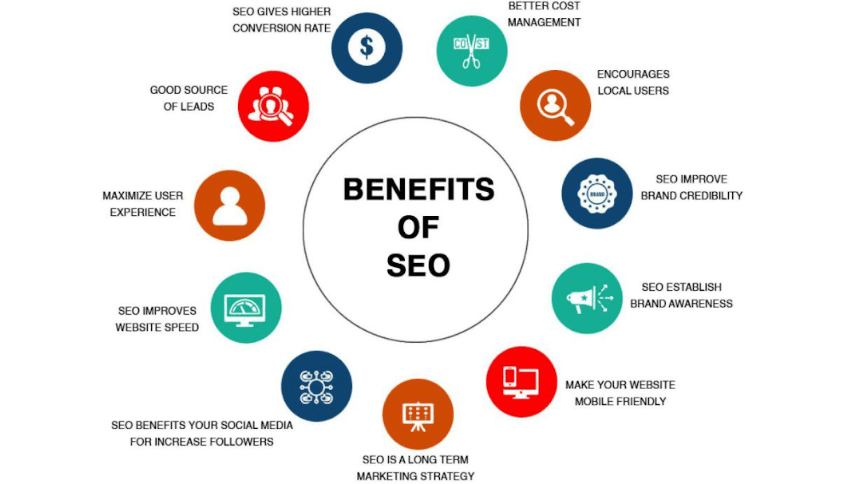
When a restaurant owner searches for “how to reduce phone calls for reservations”, your website should be the first thing they see.
📌 SEO strategies to attract chatbot buyers:
- ✅ Write industry-specific blogs – Example: “How Chatbots Help Salons Reduce No-Shows.”
- ✅ Optimize for local search – Use keywords like “best restaurant chatbot in New York” to appear in location-based searches.
- ✅ List your services on Google My Business – Many local business owners search for chatbot providers nearby.
🔹 Here is an example:
A local dentist in Miami is frustrated with missed calls from patients wanting to book appointments. They search for “automated appointment booking solution” and land on your blog. They read how a chatbot can confirm bookings via WhatsApp and decide to contact you.
That’s how SEO helps sell chatbots passively.
Outreaching the Right Businesses
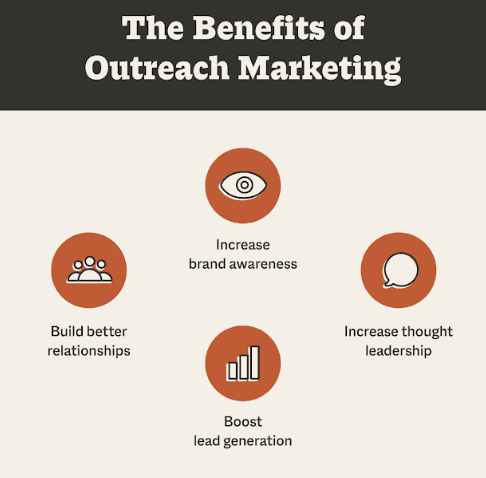
Not every local business needs a chatbot. Focus on those that rely on customer interaction, scheduling, or lead generation.
📍Where to find potential clients:
- 🔹 LinkedIn – Search for businesses actively hiring customer support staff.
- 🔹 Google Maps – Look for businesses with poor response times in reviews.
- 🔹 Business Directories – Identify restaurants, salons, real estate agencies, and clinics.
👀 Signs a business might need a chatbot:
- ❌ High call volume – They struggle with too many customer inquiries.
- ❌ Outdated website – They don’t have live chat or online booking options.
- ❌ Slow response time – They take too long to reply to Facebook, WhatsApp, or Instagram messages.
🔹Here is a Scenario:
You visit a restaurant’s Google My Business page and see customers complaining about slow response times for reservations. You reach out via email:
"Hey [Restaurant Name], I noticed customers often ask about availability on Google, but there’s no instant reply. A chatbot can automate table reservations and boost bookings. Let’s hop on a quick call to see how this works!"
This makes the conversation relevant and problem-solving, not salesy.
Social Media – Engage with Business Owners
Most local businesses spend time on Facebook, Instagram, and LinkedIn. Your goal is to get in front of them with valuable content.
📌 Social media strategies to attract chatbot buyers:
- ✅ Join industry-specific Facebook groups – Share chatbot success stories.
- ✅ Post short explainer videos – Show how chatbots answer FAQs, book appointments, or generate leads.
- ✅ Create LinkedIn posts showcasing real-world results – Example: “How a chatbot helped a gym get 50 new members in 30 days.”
- ✅ Use Instagram Stories & Reels – Record short chatbot demos and behind-the-scenes setup videos.
🔹 Here is a Scenario:
A salon owner follows your Instagram page and sees a story demoing how chatbots confirm bookings via Instagram DMs. They message you: "How can I get this for my business?"
Now, you have a warm lead without direct outreach.
Ads – Target Local Business Owners Directly
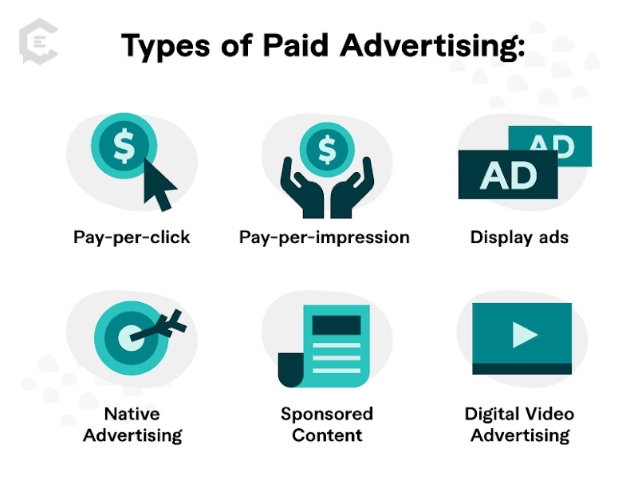
SEO and social media take time. If you want instant visibility, use paid ads.
🚀 Best ad strategies for selling chatbots:
- 🎯 Facebook & Instagram Ads – Target business owners by industry and location.
- 🎯 Google Search Ads – Bid for searches like “automate customer inquiries” or “WhatsApp chatbot for local business.”
- 🎯 LinkedIn Ads – Reach decision-makers like clinic managers and retail business owners.
🔹 Here is an example:
You run a Facebook ad with this message:
"Tired of answering the same customer questions every day? Automate FAQs, bookings, and sales with a chatbot! Book a free demo now."
A local gym owner sees the ad and clicks. You now have a potential customer who is already interested in automation.
Newsletter – Educate and Build Trust Over Time
Not every business owner buys immediately. Some need more time. A newsletter helps nurture these leads until they’re ready to buy.
📧 How to make your newsletter valuable:
- ✅ Provide holistic content on marketing strategies, customer support automation, and chatbot use cases.
- ✅ Show how chatbots fit naturally into business workflows rather than just selling them.
- ✅ Share case studies of businesses that boosted revenue using chatbots.
- ✅ Offer free resources like “The Beginner’s Guide to Automating Customer Support.”
🔹 Here is an example:
A real estate agency isn’t ready to buy a chatbot today. But they subscribe to your newsletter. Two months later, they read your email about how chatbots automate lead qualification. Now, they’re convinced.
This is why consistent follow-ups matter.
Ask Existing Clients or Extend Your Services
If you already run a web development, marketing, or IT service agency, you don’t need new clients. You can sell chatbots to your existing customers.
💡 Ways to extend chatbot services:
- ✅ If you build websites, offer chatbots as an add-on for better engagement.
- ✅ If you run Facebook Ads for clients, bundle chatbots to capture and nurture leads automatically.
- ✅ If you manage e-commerce stores, integrate chatbots for customer support and abandoned cart recovery.
🔹 Here is an example:
You’re a marketing agency running Facebook Ads for a dental clinic. They complain about too many leads but not enough time to respond. You suggest:
"What if a chatbot answered patient inquiries instantly, booked appointments, and followed up with reminders? You’d never miss a lead again."
Since they already trust you, selling them a chatbot becomes effortless.
2. Middle of the Funnel Strategies for Selling Chatbots to Local Businesses
Getting local businesses interested in chatbots is one thing—convincing them to take action is another.
At the middle of the funnel (MOFU) stage, your goal is to deepen their understanding of chatbots and build trust. Business owners may be aware of automation, but they need to see real proof before investing.
This is where live demos, case studies, webinars, product decks, and testimonials become powerful tools. They bridge the gap between curiosity and commitment.
Using Recorded or Live Demos
Most business owners don’t fully understand how a chatbot works until they see it in action. A demo helps them visualize the impact on their business.
📌 Strategies to use demos effectively:
- ✅ Pre-record short demos – Create industry-specific demos, like “How a chatbot handles table reservations for restaurants.”
- ✅ Offer live demos – Let business owners test the chatbot in real time during a call.
- ✅ Use screen-sharing tools – Walk them through chatbot features step by step.
🔹 Here is how it might look:
A salon owner doesn’t believe chatbots can reduce appointment booking time. You share your screen, show a chatbot handling bookings via Instagram DMs, and within minutes, they realize the potential.
A well-timed demo can turn hesitation into an instant sale.
Offering Case Studies
Case studies prove results and make chatbot benefits tangible. Business owners relate more when they see how others succeeded with chatbots.
📌 How to create effective case studies:
- ✅ Highlight key pain points – Example: “A fitness studio struggled with missed inquiries.”
- ✅ Show clear results – “After implementing a chatbot, they responded 70% faster and doubled bookings.”
- ✅ Use simple, real numbers – Business owners trust stats, but keep them easy to understand.
🔹 Here is how it might look:
You meet a restaurant owner who doesn’t believe a chatbot can increase reservations. You show them a case study of another restaurant that boosted table bookings by 40% using an Instagram chatbot.
Now, instead of convincing them, they see the proof themselves.
Host Webinars – Educate & Convert
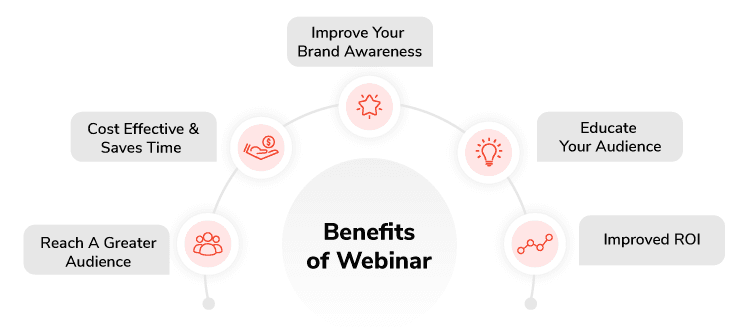
Webinars are one of the most powerful conversion tools. They allow you to interact directly with business owners, explain chatbot benefits, and answer objections in real-time.
📌 How to use webinars to sell chatbots:
- ✅ Add webinar CTAs across content – In blogs, emails, newsletters, and YouTube videos, promote:
“Sign up for a free webinar on automating customer support with chatbots!”
- ✅ Create pre-recorded webinars – Tailor them to different industries (restaurants, real estate, salons, etc.).
- ✅ Charge a small fee if you want – You can also charge a nominal fee for the webinar to cover your marketing costs if you want. This way, even if attendees don’t immediately convert to paid plans, you still make money while building trust and providing value.
🔹 Here is how it might look:
A clinic owner sees your blog about how chatbots improve patient communication. At the end, they find a webinar signup link. They join, watch how chatbots reduce missed calls and automate bookings, and schedule a call with you for chatbot setup.
Webinars create a high-trust environment, making it easier to close deals.
Product Decks – A Visual Sales Pitch
Some business owners prefer structured presentations over live conversations. A product deck (a well-designed PowerPoint or PDF) summarizes chatbot benefits concisely.
📌 What to include in your product deck:
- ✅ The problem – “Local businesses struggle with slow response times.”
- ✅ The solution – “Chatbots automate replies and bookings instantly.”
- ✅ Features & benefits – “WhatsApp chatbot handles customer queries 24/7.”
- ✅ Pricing & next steps – "Plans start at $XX/month. Book a free trial today."
🔹 Here is how it might look:
A real estate agency wants chatbot details but doesn’t have time for a demo. You send a product deck showing how chatbots automate property inquiries. After reviewing, they book a call with you for chatbot setup.
A well-designed product deck can close sales without needing direct interaction.
Free Consultation – A No-Pressure Sales Tactic
Some business owners hesitate to invest because they’re unsure how a chatbot fits into their workflow. Offering a free 15-minute consultation helps them see the value firsthand.
📌 How to offer effective consultations:
- ✅ Keep it industry-specific – Focus on their business type (restaurant, salon, clinic, etc.).
- ✅ Let them talk first – Ask about their biggest challenges.
- ✅ Explain chatbot benefits based on their needs – “You get a lot of missed calls? A chatbot can handle FAQs instantly.”
- ✅ End with a soft pitch – Offer a free trial or discounted setup.
🔹 Here is how it might look:
A gym owner struggles with handling membership inquiries. During a free consultation, you show them how a chatbot automates membership sign-ups and syncs with their CRM.
By the end of the call, they’re convinced and ready to buy.
Testimonials – The Power of Social Proof
Business owners trust other business owners more than any sales pitch. A strong testimonial can remove doubts and push a prospect to buy.
📌 How to use testimonials effectively:
- ✅ Ask happy clients for a short review – Preferably a video or a written quote.
- ✅ Show real results – Example: “Thanks to this chatbot, we reduced missed calls by 60%!”
- ✅ Display testimonials on key pages – Homepage, landing pages, and email campaigns.
🔹 Here is how it might look:
A clinic manager is hesitant about chatbot pricing. You show them a testimonial from another clinic:
"We were losing leads due to slow responses. After using this chatbot, patient bookings increased by 35%. It paid for itself in the first month!"
Now, instead of pushing them to buy, they feel reassured by someone else’s experience.
3. Bottom of the Funnel Strategies for Selling Chatbots to Local Businesses
At this stage, business owners are interested but hesitant. They’ve seen demos, read case studies, and understand chatbot benefits. Now, they need a final push to say yes.
Your job is to handle objections, close the deal, and ensure smooth onboarding. If you get this right, not only will you make the sale, but you’ll also build long-term client relationships.
Let’s break it down.
Handling Objections
Even when businesses see the value of chatbots, they hesitate before buying. The key to overcoming objections is understanding their concerns and providing clear solutions.
📌 Common objections and how to handle them:
- ❌ “It’s too expensive.”
✅ Reframe it as an investment. Show how a chatbot saves time, increases revenue, and reduces labor costs.
Example: “Your restaurant loses leads daily due to missed messages. A chatbot captures those leads and converts them into bookings. Within two months, it pays for itself.”
- ❌ “It’s too complex to manage.”
✅ Show the simplicity. If they worry about complexity, offer a demo of the no-code builder or highlight after-sales support.
Example: “You don’t need technical skills. The chatbot runs on autopilot, and we provide full support if you ever need help.”
- ❌ “I’m not sure it will work for my business.”
✅ Give real-world proof. Share case studies of businesses in their industry.
Example: "A salon just like yours increased bookings by 30% with a chatbot. Let’s test it for a month and see the results for yourself."
By handling objections with confidence and proof, you remove doubts and build trust.
Closing the Deal
Once objections are handled, it’s time to ask for the sale. The best way to close is to make the next step simple.
📌 How to close the deal smoothly:
- ✅ Offer a limited-time incentive – A free setup, a discount, or an extra feature if they sign up today.
- ✅ Use a low-risk CTA – Example: “Let’s start with a 7-day free trial. No commitment, just results.”
- ✅ Summarize key benefits one last time – "With this chatbot, you’ll never miss a lead, customers will get instant replies, and you’ll save hours every week. Ready to get started?"
🔹 Here is how it might look::
A real estate agent is interested but hesitant. You offer a 14-day free trial and tell them:
"If it doesn’t increase your lead conversion rate, you don’t pay. But if it does, you’ll wonder why you didn’t get it sooner."
By making the decision risk-free, you make it easier for them to say yes.
Onboarding and After-Sales Support
Closing a sale is just the beginning. If a business struggles with setup or doesn’t see results, they might cancel. Strong onboarding and support keep clients engaged and happy.
📌 Best onboarding strategies:
- ✅ Set up the chatbot for them – Reduce friction by handling the initial setup.
- ✅ Provide a step-by-step guide – A short video tutorial or a one-page document on how to use the chatbot.
- ✅ Check in after a week – Ask if they need help with chatbot flows or automation.
📌 Offering After-Sales Support:
- ✅ Live chat or email support – Ensure they know how to reach you if they need help.
- ✅ Regular chatbot performance reports – Show them how the chatbot is benefiting their business.
- ✅ Upselling opportunities – Once they see results, offer advanced features or premium plans.
🔹 Here is how it might look:
A clinic starts using a chatbot but isn’t utilizing all features. You follow up and say:
"I noticed you haven’t set up appointment reminders yet. Let’s activate it—it’ll reduce no-shows and improve efficiency!"
This proactive support strengthens relationships and increases long-term revenue.
How to Scale Up and Get More Clients
Once you've started selling chatbots to local businesses, the next step is to scale up and build a sustainable, high-revenue business.
Instead of chasing individual clients, you need strategies that bring consistent leads and recurring sales without increasing your workload.
Scaling up requires leveraging referrals, forming partnerships, and automating key processes. These methods help you sell more with less effort, turning chatbot sales into a predictable, growing business.
Here’s how you can expand your chatbot business efficiently.
Using Referrals to Get More Business
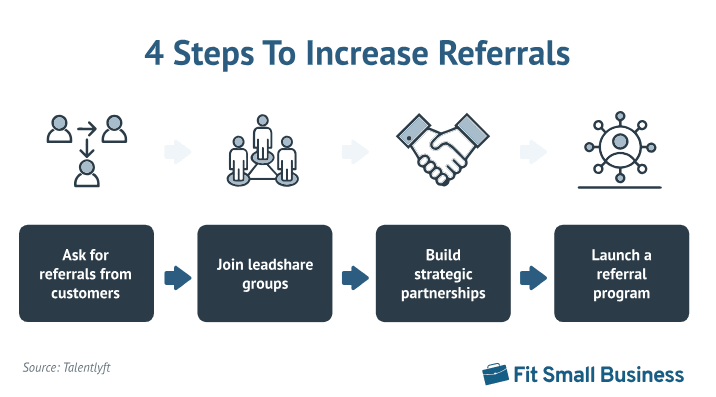
Word-of-mouth is one of the most powerful ways to scale. Business owners trust recommendations from other business owners more than ads or cold outreach. If you provide value, clients will gladly refer others—but you need to encourage them to do so.
📌 How to get more referrals:
- ✅ Create an Incentivized Referral Program – Offer discounts, free feature upgrades, or cash rewards for successful referrals.
🔹 Here is an example:
A restaurant owner loves how your chatbot handles reservations. You offer them one month free if they refer another restaurant. The owner introduces you to two other businesses, bringing in new clients effortlessly.
- ✅ Ask for Referrals at the Right Time – The best time to ask for referrals is when a client has seen results. After 30 days, follow up:
"Your chatbot has automated over 500 customer queries—imagine how much time you’ve saved! Do you know another business that could benefit from this?"
🔹Here is an example:
A salon sees a 30% increase in appointment bookings with your chatbot. They mention a partnering beauty spa struggling with the same issue. You reach out, mention the referral, and land another chatbot sale.
By actively seeking referrals, you create a chain reaction of new clients.
Partnering with Agencies and Freelancers
Why find customers one by one when agencies already have them? Partnering with digital marketing agencies, web developers, and freelancers allows you to tap into their existing client base and bring in multiple clients at once.
📌 Best ways to form partnerships:
- ✅ Approach Web Development Agencies – Bundle Chatbots with Website Design
Web development agencies build websites, but many lack chatbot automation services. You can partner with them to offer a chatbot as an add-on for their web clients.
🔹 Here is an example:
A real estate agency hires a web developer to revamp their website. The agency bundles your chatbot service as part of the package, automating property inquiries and lead capture. Instead of a static website, the agency delivers an interactive chatbot-powered sales tool, benefiting both you and their client.
- ✅ Work with Social Media Marketers – Automate Lead Handling for Ads
Social media marketers run ad campaigns for businesses, but their biggest challenge? Clients struggle to respond to inquiries fast enough. A chatbot automates lead handling and ensures no potential customer is lost.
🔹 Here is an example:
A fitness center runs Facebook Ads to attract new members, but the owner can’t reply to messages instantly. A chatbot engages leads automatically, collects contact details, and books free trial classes. The marketer gets better ad results, the fitness center converts more members, and you land a chatbot client.
- ✅ Collaborate with IT Service Providers – Sell Chatbots as a Business Automation Tool
Many businesses already trust their IT service providers for website hosting, email setup, and CRM integrations. You can partner with IT firms to position chatbots as a must-have automation tool.
🔹 Here is an example:
A clinic works with an IT provider to set up a cloud-based patient record system. The IT provider suggests adding a chatbot to automate appointment bookings and reminders. The clinic agrees, seeing how it fits into their digital upgrade, and you get a new chatbot client.
By partnering with agencies, freelancers, and IT firms, you create ongoing revenue streams instead of chasing one client at a time.
Automating Sales and Support for Long-Term Growth
As your chatbot business grows, you won’t have time to manually handle every lead, demo, or support request. Automation helps you scale without extra effort, allowing you to focus on expanding your business instead of daily tasks.
📌 Ways to automate and grow faster:
- ✅ Use a Chatbot for Your Own Lead Generation – Capture Leads 24/7
If you’re selling chatbots to local businesses, you should be using one yourself. A lead-generation chatbot can answer inquiries, collect emails, and book demo calls automatically.
🔹 Here is an example:
You start receiving too many demo requests to handle manually. You set up a chatbot on your website that qualifies leads, answers FAQs, and schedules calls automatically. Now, you only talk to serious buyers, saving time and effort.
- ✅ Automate Client Onboarding – Reduce Support Requests
A strong onboarding system prevents confusion and churn. Instead of explaining everything manually, create a pre-recorded onboarding video or a step-by-step guide.
🔹Here is an example:
A restaurant owner buys a chatbot but struggles with setting up automated menu ordering. Instead of answering every question manually, you provide a 5-minute onboarding video that walks them through the setup. This reduces support requests and makes onboarding faster and smoother.
Take Your First Step Now!
Selling chatbots to local businesses is no longer a challenge—it’s an opportunity waiting to be tapped. With rising demand for automation, businesses are actively looking for solutions that save time, reduce costs, and improve customer interactions. The key to success? A structured approach.
By identifying the right businesses, handling objections, and leveraging partnerships, you can turn chatbot sales into a high-revenue, scalable business. And with BotPenguin’s White Label and Reseller programs, you don’t need to build from scratch.
Ready to start your journey? Join BotPenguin today and turn chatbot sales into your next big business!
Frequently Asked Questions (FAQs)
Who buys chatbots?
Local businesses, digital agencies, e-commerce stores, and service providers buy chatbots to automate customer interactions. Industries like restaurants, real estate, healthcare, and retail use them for lead generation, bookings, and customer support. Any business struggling with high inquiries and slow response times is a potential buyer.
Can you sell chatbots to local businesses?
Yes, local businesses need automation to handle customer inquiries, bookings, and FAQs. Selling chatbots to them is easier than ever, as they want faster response times and better engagement.
Platforms like BotPenguin allow you to resell chatbots or offer white-label solutions under your own brand.
Is selling chatbots profitable?
Yes, chatbot sales generate recurring revenue through monthly subscriptions and add-ons. Businesses save on hiring costs, making them willing to invest in automation.
Selling chatbots through reseller programs or white-label solutions allows for high margins, making it a profitable and scalable business model.
Is there a demand for chatbots?
Yes, chatbot demand is rising as businesses shift towards automation. Consumers expect instant replies, and businesses struggle to keep up manually. Industries like real estate, healthcare, and e-commerce actively seek chatbot solutions to boost sales, improve response times, and reduce support costs.
How do I find clients to sell chatbots?
Use LinkedIn, Google Maps, business directories, and local Facebook groups to find businesses struggling with customer inquiries.
Target industries with high call volumes, slow response times, or outdated websites. Offering free demos or case studies helps convert leads into paying customers.
What pricing model should I use for selling chatbots?
You can offer monthly subscriptions, one-time setup fees, or tiered pricing based on features. Many businesses prefer low-cost entry plans with add-ons like advanced integrations or premium support. If using a white-label program, you set your pricing and keep 100% of the profit.
Can I sell chatbots without coding knowledge?
Yes, chatbot platforms like BotPenguin provide no-code solutions that allow you to create and customize chatbots without programming skills.
You can use drag-and-drop builders, pre-built templates, and AI-powered automation to design chatbots for different industries without technical expertise.

